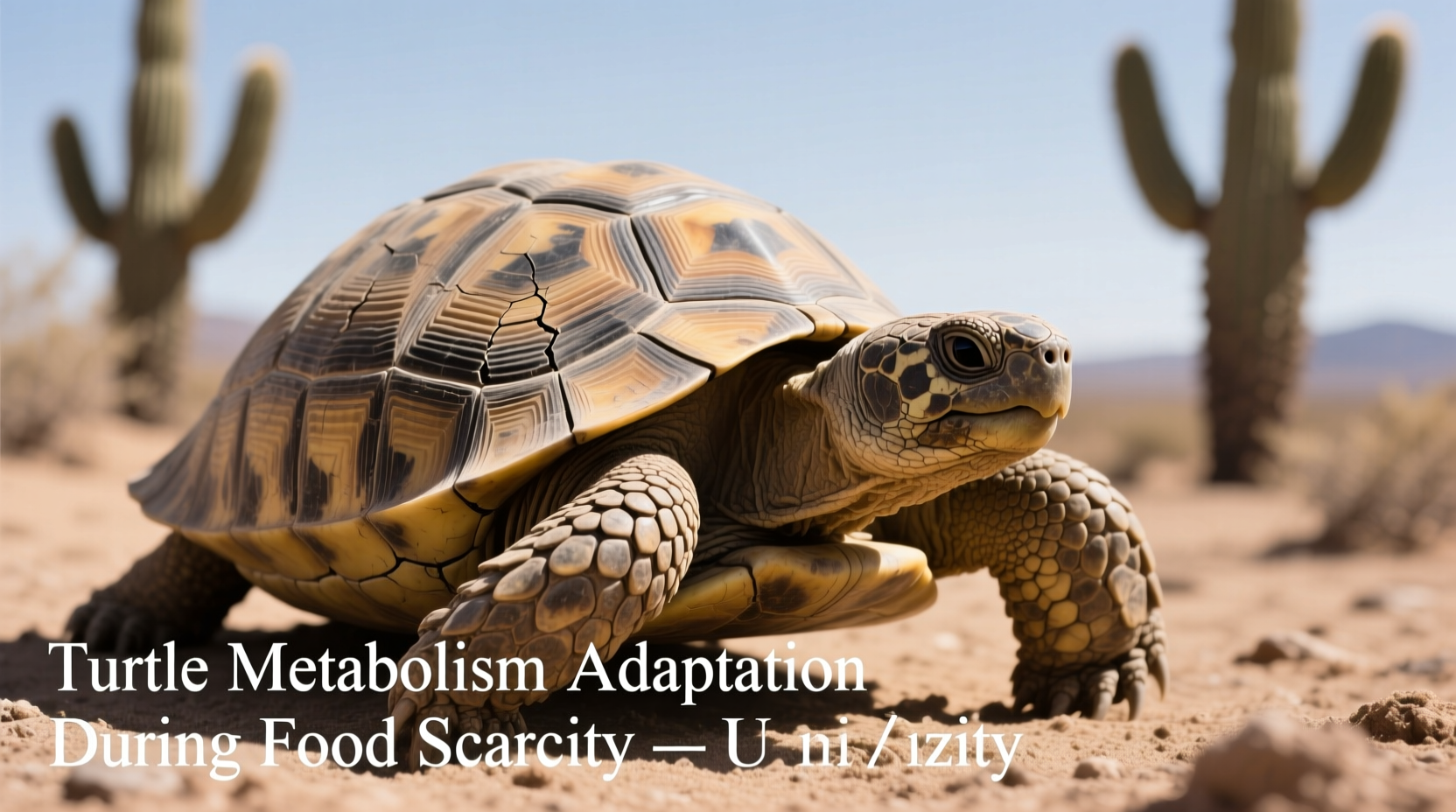Understanding turtle survival without food isn't just about a single number—it's about recognizing the biological mechanisms and practical considerations that determine how long your shelled companion can safely go between meals. Whether you're planning a vacation, noticed your pet has stopped eating, or simply want to understand reptile biology better, this guide provides science-backed information to help you make informed decisions.
Species-Specific Survival Timelines
Turtle survival without food varies dramatically across species due to evolutionary adaptations. The table below shows verified survival ranges under controlled conditions from veterinary studies:
| Turtle Species | Average Survival Time | Maximum Documented | Key Factors |
|---|---|---|---|
| Red-Eared Slider | 8-12 weeks | 140 days (brumation) | Water temperature, body condition |
| Box Turtle | 6-10 weeks | 90 days | Humidity, pre-hibernation fat stores |
| Painted Turtle | 10-14 weeks | 160 days (brumation) | Water oxygen levels, metabolic rate |
| Leatherback Sea Turtle | 4-6 weeks | 50 days | Ocean currents, migration needs |
Source: American Veterinary Medical Association Reptile Nutrition Guidelines
How Turtles Survive Extended Periods Without Food
Turtles have evolved remarkable physiological adaptations that allow them to endure food scarcity. Unlike mammals, turtles can dramatically slow their metabolism—a process called bradymetabolism—reducing energy needs by up to 70% during periods of food scarcity.

The Metabolic Timeline: What Happens as Days Pass
Understanding the biological progression helps determine when intervention becomes critical:
- Days 1-14: Turtles utilize glycogen stores; minimal behavioral changes
- Days 15-30: Metabolism slows 30-40%; fat reserves become primary energy source
- Days 31-60: Protein breakdown begins; noticeable weight loss (5-10%)
- Days 61-90: Organ function declines; immune system weakens significantly
- Days 91+: Critical organ damage; survival becomes unlikely without intervention
This metabolic adaptation timeline comes from research conducted by the US Geological Survey's Upper Midwest Environmental Sciences Center, which has tracked wild turtle populations through seasonal food variations.
Four Critical Factors That Change Survival Time
When determining how long your turtle can safely go without food, these context boundaries dramatically alter the timeline:
1. Temperature and Brumation
Cold-blooded reptiles enter brumation (reptile hibernation) when temperatures drop below 50°F (10°C). During brumation, turtles can survive 3-4 times longer without food:
- At 75°F (24°C): Metabolism remains active; survival limited to 6-8 weeks
- At 60°F (15°C): Metabolism slows 50%; survival extends to 10-12 weeks
- Below 50°F (10°C): Brumation begins; survival possible for 3-5 months
2. Age and Life Stage
Young turtles have dramatically shorter survival windows due to higher metabolic demands:
- Hatchlings: Maximum 2-3 weeks without food
- Juveniles (1-3 years): 4-6 weeks
- Adults: 8-14 weeks depending on species
The Association of Reptilian and Amphibian Veterinarians emphasizes that juvenile turtles require consistent nutrition for proper shell development, making extended fasting particularly dangerous.
3. Body Condition and Fat Reserves
Turtles with adequate fat reserves survive significantly longer. A turtle at optimal body weight can endure 30-50% longer than one already underweight. Regular weight monitoring provides crucial insight into your turtle's fasting capacity.
4. Water Availability
While this article focuses on food, water access is equally critical. Turtles can survive weeks without food but only days without water. Dehydration accelerates organ failure and reduces survival time by 40-60%.
Practical Guidance for Turtle Owners
Knowing how long turtles survive without food is only half the equation—you need actionable steps for real-world scenarios.
Normal Feeding Schedules by Species
Prevent unintentional fasting by following these science-backed feeding guidelines:
- Aquatic turtles: Daily feeding for juveniles, every other day for adults
- Box turtles: 3-4 times weekly with varied protein and vegetable sources
- Sea turtles: Daily feeding with appropriate marine-based diet
When to Worry: Warning Signs
Monitor for these critical indicators that your turtle needs immediate attention:
- Weight loss exceeding 10% of body mass
- Swollen eyes or lethargic behavior after 3 weeks without food
- Shell softening or pyramiding in juveniles
- Complete refusal of favorite foods for more than 10 days
Vacation Planning: Safe Fasting Periods
For responsible turtle owners planning travel:
- Adult turtles: Maximum 2 weeks without feeding (with proper setup)
- Juveniles: Never leave more than 7 days without care
- Always maintain proper temperature and water quality
- Consider automatic feeders for extended absences
When to Seek Veterinary Help Immediately
Don't wait if you observe these emergency signs:
- Your turtle hasn't eaten for 3+ weeks (juveniles) or 6+ weeks (adults)
- Visible weight loss with sunken eyes or limbs
- Abnormal breathing or swimming difficulties
- Complete lethargy or inability to right itself
Early intervention dramatically improves recovery chances. The Cornell University Hospital for Animals reports that turtles receiving treatment within the first 30 days of appetite loss have 85% recovery rates versus just 35% after 60 days.
Preventing Unnecessary Fasting
Proactive care prevents most feeding issues:
- Maintain consistent temperature gradients in habitat
- Provide varied, species-appropriate diet
- Monitor weight monthly using a digital scale
- Minimize environmental stressors and handling
- Schedule annual veterinary checkups with reptile specialist











 浙公网安备
33010002000092号
浙公网安备
33010002000092号 浙B2-20120091-4
浙B2-20120091-4